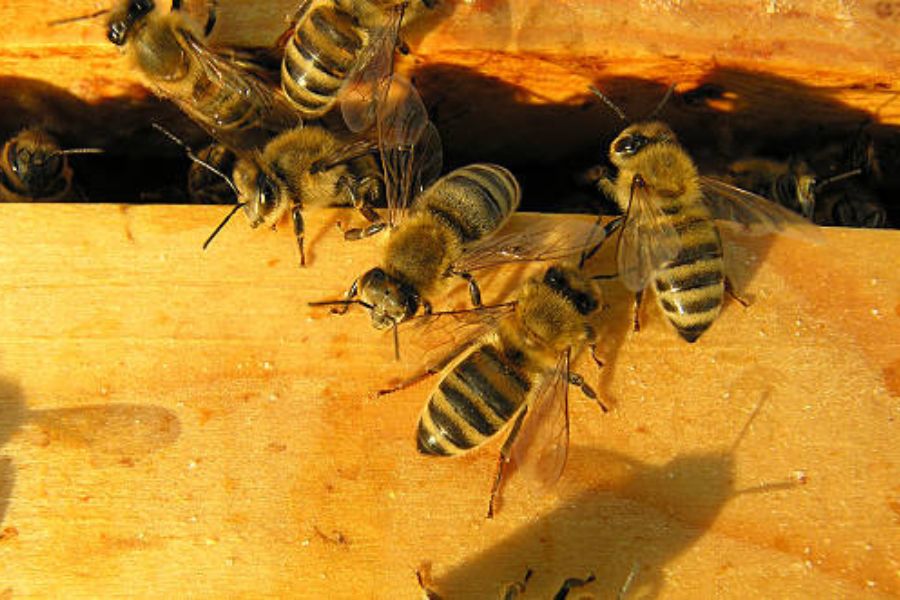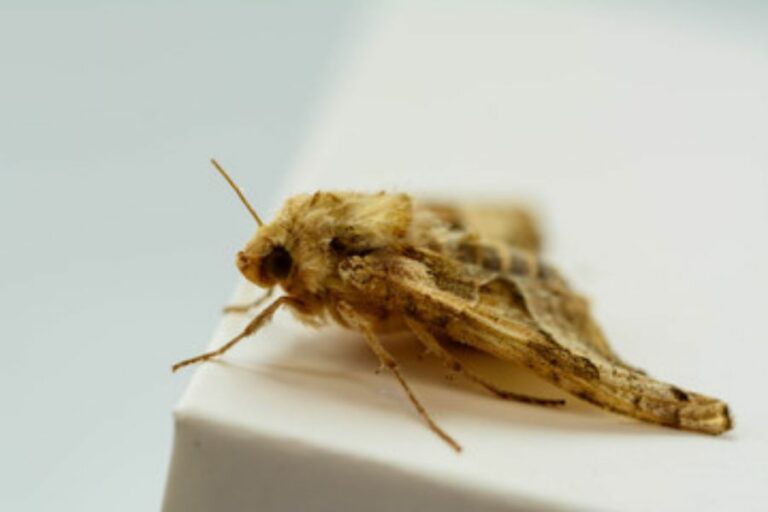13 Impressive & Unsual Bee Facts

Bee Facts: Unravelling the Extraordinary and Unusual Facts of Nature’s Wonderful Bees
Welcome to our buzzing blog, where we embark on a captivating journey into the extraordinary world of bees. These remarkable creatures, often seen as nature’s unsung heroes, hold many secrets waiting to be unveiled. In this collection of unusual facts and hidden wonders, we delve deep into the lives of bees, shedding light on their remarkable abilities, unique behaviours, and intriguing adaptations.
Prepare to be amazed as we uncover the medicinal marvels hidden within bee products, explore the intricate communication methods these tiny insects employ to share vital information and discover the astonishing truth about bees’ ability to recognise individual flowers. From their mesmerising waggle dance to their impeccable sense of taste, we’ll delve into the intricacies of bee life that continue to captivate scientists and nature enthusiasts alike.
Join us on this captivating journey where we unravel the mysteries of colony collapse disorder, explore the ingenious strategies bees employ to protect themselves from predators and unveil their extraordinary sense of smell. So, put on your beekeeper suit, open your mind to the wonders of the insect kingdom, and let’s dive into the extraordinary and unusual facts of bees. Get ready to be amazed!
Are there any medicinal uses of bee products?
Yes, bee products have been used for medicinal purposes for centuries. Honey, known for its antibacterial properties, can be applied topically to wounds and burns to promote healing. Propolis, a resin-like substance collected by bees, is rich in antioxidants and has been used for its antimicrobial and anti-inflammatory properties. Royal jelly, a nutritious secretion produced by worker bees, is believed to have various health benefits, including immune system support. Additionally, bee venom is used in apitherapy to treat conditions such as arthritis and multiple sclerosis. These bee products offer a natural and holistic approach to health and wellness.
How do bees communicate the location of food sources?
Bees communicate the location of food sources through a unique dance called the “waggle dance.” When a forager bee returns to the hive after discovering a food source, it performs this dance to convey important information to other bees. By moving in a figure-eight pattern and waggling its abdomen, the dancing bee indicates the direction and distance of the food source concerning the sun’s position. Other bees observe these movements and interpret the dance, allowing them to navigate precisely to the food source. It’s a unique form of communication that enables efficient foraging and resource sharing within the bee colony.

Can bees recognise individual flowers?
Yes, bees can recognise individual flowers. They rely on their keen sense of colour vision and scent to distinguish different flower species and even specific individuals within those species. Bees learn to associate specific visual and olfactory cues with the rewards of other flowers, such as nectar and pollen. This recognition helps them optimise their foraging efforts by focusing on the most rewarding flower sources. Through complex learning processes, bees develop floral preferences and can remember and revisit specific flowers, playing a vital role in pollination and maintaining the delicate balance of ecosystems.
What is the waggle dance, and how do bees use it to communicate?
The waggle dance is a fascinating form of communication used by honeybees to convey information about the location of food sources to other hive members. When a forager bee returns to the hive after finding a rewarding food source, it dances on the vertical comb surface.
During the waggle dance, the bee moves in a figure-eight pattern while vigorously waggling its abdomen. The angle and duration of the waggle portion of the dance communicate the direction and distance of the food source with the sun’s position. The direction is indicated by the angle of the waggle relative to the vertical comb, while the duration represents the distance, with longer waggle runs showing greater distances.
By observing the waggle dance and interpreting its cues, other worker bees can acquire information about the location of valuable food sources, allowing them to navigate accurately and efficiently to those locations. It’s a remarkable example of communication and cooperation within the hive.
Do bees have a sense of taste?
Yes, bees do have a sense of taste. Their taste receptors on their mouthparts and sensory hairs enable them to perceive and differentiate various flavours. Bees rely on their sense of taste to identify and evaluate the quality of nectar and pollen from different flowers.
When a bee visits a flower, it uses its beak (a straw-like mouthpart) to collect nectar. The taste receptors on the brim and sensory hairs provide information about the sweetness, chemical composition, and overall quality of the nectar. Bees are attracted to the sweet taste of nectar, which indicates its high energy content.
Bees’ sense of taste is crucial for their foraging behaviour and helps them select the most rewarding flowers for collecting nectar and pollen. Additionally, it plays a role in their communication and ability to share information about food sources within the hive.
What is colony collapse disorder, and what are its causes?
Colony Collapse Disorder (CCD) is a phenomenon that occurs when the majority of worker bees in a colony disappear or die, leaving behind a queen and a few immature bees. This sudden and significant loss of worker bees poses a severe threat to bee colonies and has raised concerns worldwide due to its impact on pollination and agricultural systems.
The exact causes of CCD are still not fully understood, but researchers believe that it is likely a combination of various factors. These include the increased use of pesticides, particularly neonicotinoids, which can affect bees’ immune systems and navigation abilities. Other contributing factors may include habitat loss, lack of diverse floral resources, parasites and diseases (such as Varroa mites and viruses), poor nutrition, stress, and climate change.
CCD represents a complex and multifaceted challenge for honeybee populations, and addressing its causes requires a holistic approach involving sustainable agricultural practices, reduced pesticide use, habitat preservation, and bee health management strategies.

How do bees protect themselves from predators?
Bees employ various strategies to protect themselves and their hive from predators. One of the most well-known defence mechanisms is their ability to sting. Bees have a specialised stinger connected to venom sacs, which they use to defend against threats. When a bee stings, it injects venom into the attacker, causing pain and deterring further aggression. However, stinging is a last resort for bees, as the act of stinging often results in the bee’s death.
Bees also exhibit collective defence through teamwork. When a threat, such as a predatory wasp or hornet, approaches the hive, worker bees will swarm around the intruder, creating a ball of bees that generate heat and vibrations. This behaviour helps raise the temperature and effectively “cook” the predator, protecting the hive.
Furthermore, bees have evolved physical adaptations for defence. Their hives are constructed with small entrances that are easier for bees to defend against larger intruders. Additionally, some species of bees, such as the stingless bees, have strong mandibles that they use to bite and repel attackers.
Can bees recognise their scent?
Yes, bees have a remarkable ability to recognise their scent. Each bee colony has its unique scent, a combination of pheromones the bees produce. This scent is a form of identification and helps bees recognise colony members. It plays a crucial role in maintaining unity and cooperation within the hive.
By recognising their scent, bees can distinguish intruders or bees from other colonies that may try to enter their hive. This recognition allows them to protect the hive and maintain the integrity of their social structure. It also helps bees in tasks such as foraging, as they can identify and communicate with other colony members more effectively.
What is the role of male bees in the hive?
Male bees, known as drones, have specific roles within the hive. Their primary purpose is reproduction. Drones are larger than worker bees and do not possess stingers. They are reared from unfertilised eggs, and their sole function is to mate with a queen.
Drones typically spend their time within the hive, awaiting opportunities to mate. When a queen goes on a mating flight, drones will pursue her, and multiple drones may mate. After mating, the drones die as their reproductive organs are ripped from their bodies.
Besides their reproductive function, drones do not engage in hive maintenance, foraging, or other tasks worker bees perform. They are dependent on worker bees for food and care. During periods of resource scarcity or in preparation for winter, worker bees may expel drones from the hive to conserve resources and ensure the colony’s survival.
Overall, the role of male bees in the hive is focused solely on mating and contributing to the next generation of bees.
Do bees have a sense of time?
Bees have a remarkable sense of time and exhibit various time-related behaviours. They possess an internal biological clock that helps them regulate their daily activities. This internal clock is influenced by environmental cues such as light and temperature.
One unusual behaviour related to time is the daily foraging routine of bees. They tend to have specific times of the day when they are more active in searching for food sources. Bees can adjust their internal clocks based on the changing duration of daylight throughout the year.
Bees also rely on the position of the sun as a navigational tool. They use the sun’s position and movement across the sky to orient themselves and return to the hive.
These behaviours indicate that bees have a sense of time and can use temporal cues to regulate their activities and navigate their surroundings.
Can bees get drunk from fermented nectar?
Bees can indeed become intoxicated from fermented nectar under certain circumstances. When nectar is exposed to air and yeast, it can undergo fermentation, producing alcohol. In some cases, bees may consume fermented nectar from flowers or from within the hive.
The alcohol content in fermented nectar can affect bees’ behaviour and coordination. Intoxicated bees may exhibit disorientation, difficulty flying, or unusual movements. In extreme cases, excessive alcohol consumption can lead to the death of individual bees.
However, it’s important to note that bees have mechanisms to regulate their intake of fermented nectar. They generally avoid consuming large quantities of fermented nectar and prefer fresh nectar sources. Additionally, the alcohol content in most natural fermentations is relatively low, reducing the likelihood of severe intoxication.
How do bees cool down their hives during hot weather?
Bees have evolved effective strategies to cool down their hives and maintain an optimal temperature during hot weather. When the temperature rises, bees employ two primary methods of cooling:
- Water collection: Worker bees collect water from nearby sources, such as ponds or dew on plants. They carry the water back to the hive in their bodies and spread it across the comb surfaces using their mouths. As the water evaporates, it absorbs heat from the hive, cooling the air inside.
- Fanning: Worker bees use their wings to circulate air within the hive. Fanning their wings rapidly creates a breeze that helps evaporate moisture and dissipate heat. This airflow carries heat away from the hive, maintaining a cooler environment.
Through these combined efforts of water collection and fanning, bees effectively regulate the temperature within their hive, ensuring that the brood and colony remain at a suitable temperature even during hot weather conditions.





